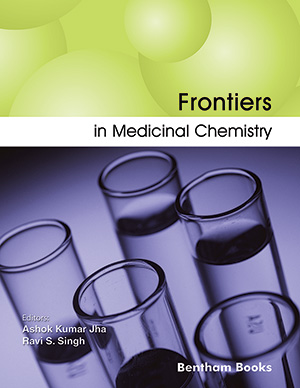Abstract
The development of nanocarriers able transport and release therapeutic agents in a controlled manner has provided a promising alternative in the oncology field due to the lack of selectivity of the conventional treatments. The encapsulation of cytotoxic compounds within nanoparticles improves the pharmacokinetic profile of the trapped drugs and allows their selective accumulation into the tumoral tissue owing to the enhance permeation and retention effect (EPR). In addition, the selectivity of the nanocarrier can be enhanced attaching targeting agents on their surface able to be specifically recognized by cancer cells or by the tumor microenvironment. Among the different materials which can be employed, mesoporous silica nanoparticles (MCM-41 type) constitutes a promising candidate due to their very interesting properties such as tuneable size, shape and porosity, high loading capacity, low toxicity, robustness and easiness fabrication and functionalization. This material presents a unique pore architecture which allows the synthesis of stimuliresponsive devices able to release the trapped drugs only in the presence of certain stimuli achieving a precise control on the drug dosage. This review presents some of the recent advances in the development of mesoporous silica nanocarriers for antitumoral therapy paying special attention on the stimuli-responsive systems able to release their load in response to external (light, magnetic field, temperature or ultrasounds) or internal stimulus (enzymes, pH, redox, among others).
Keywords: Antitumoral therapy, Drug delivery, Mesoporous silica nanoparticles, Nanomedicine, Smart materials, Stimuliresponsive release.
Current Topics in Medicinal Chemistry
Title:Smart Mesoporous Silica Nanocarriers for Antitumoral Therapy
Volume: 15 Issue: 22
Author(s): Alejandro Baeza and María Vallet-Regí
Affiliation:
Keywords: Antitumoral therapy, Drug delivery, Mesoporous silica nanoparticles, Nanomedicine, Smart materials, Stimuliresponsive release.
Abstract: The development of nanocarriers able transport and release therapeutic agents in a controlled manner has provided a promising alternative in the oncology field due to the lack of selectivity of the conventional treatments. The encapsulation of cytotoxic compounds within nanoparticles improves the pharmacokinetic profile of the trapped drugs and allows their selective accumulation into the tumoral tissue owing to the enhance permeation and retention effect (EPR). In addition, the selectivity of the nanocarrier can be enhanced attaching targeting agents on their surface able to be specifically recognized by cancer cells or by the tumor microenvironment. Among the different materials which can be employed, mesoporous silica nanoparticles (MCM-41 type) constitutes a promising candidate due to their very interesting properties such as tuneable size, shape and porosity, high loading capacity, low toxicity, robustness and easiness fabrication and functionalization. This material presents a unique pore architecture which allows the synthesis of stimuliresponsive devices able to release the trapped drugs only in the presence of certain stimuli achieving a precise control on the drug dosage. This review presents some of the recent advances in the development of mesoporous silica nanocarriers for antitumoral therapy paying special attention on the stimuli-responsive systems able to release their load in response to external (light, magnetic field, temperature or ultrasounds) or internal stimulus (enzymes, pH, redox, among others).
Export Options
About this article
Cite this article as:
Baeza Alejandro and Vallet-Regí María, Smart Mesoporous Silica Nanocarriers for Antitumoral Therapy, Current Topics in Medicinal Chemistry 2015; 15 (22) . https://dx.doi.org/10.2174/1568026615666150605114826
| DOI https://dx.doi.org/10.2174/1568026615666150605114826 |
Print ISSN 1568-0266 |
| Publisher Name Bentham Science Publisher |
Online ISSN 1873-4294 |
Call for Papers in Thematic Issues
Chemistry Based on Natural Products for Therapeutic Purposes
The development of new pharmaceuticals for a wide range of medical conditions has long relied on the identification of promising natural products (NPs). There are over sixty percent of cancer, infectious illness, and CNS disease medications that include an NP pharmacophore, according to the Food and Drug Administration. Since NP ...read more
Current Trends in Drug Discovery Based on Artificial Intelligence and Computer-Aided Drug Design
Drug development discovery has faced several challenges over the years. In fact, the evolution of classical approaches to modern methods using computational methods, or Computer-Aided Drug Design (CADD), has shown promising and essential results in any drug discovery campaign. Among these methods, molecular docking is one of the most notable ...read more
Drug Discovery in the Age of Artificial Intelligence
In the age of artificial intelligence (AI), we have witnessed a significant boom in AI techniques for drug discovery. AI techniques are increasingly integrated and accelerating the drug discovery process. These developments have not only attracted the attention of academia and industry but also raised important questions regarding the selection ...read more
From Biodiversity to Chemical Diversity: Focus of Flavonoids
Flavonoids are the largest group of polyphenols, plant secondary metabolites arising from the essential aromatic amino acid phenylalanine (or more rarely from tyrosine) via the phenylpropanoid pathway. The flavan nucleus is the basic 15-carbon skeleton of flavonoids (C6-C3-C6), which consists of two phenyl rings (A and B) and a heterocyclic ...read more
 43
43
- Author Guidelines
- Graphical Abstracts
- Fabricating and Stating False Information
- Research Misconduct
- Post Publication Discussions and Corrections
- Publishing Ethics and Rectitude
- Increase Visibility of Your Article
- Archiving Policies
- Peer Review Workflow
- Order Your Article Before Print
- Promote Your Article
- Manuscript Transfer Facility
- Editorial Policies
- Allegations from Whistleblowers
- Announcements
Related Articles
-
Natural Killer Cells: Prospects in Cancer Immunotherapy
Current Immunology Reviews (Discontinued) PDGF-D Signaling: A Novel Target in Cancer Therapy
Current Drug Targets Identification of AHSA1 as a Potential Therapeutic Target for Breast Cancer: Bioinformatics Analysis and <i>in vitro</i> Studies
Current Cancer Drug Targets Cannabinoid Receptors as Therapeutic Targets
Current Pharmaceutical Design Therapeutic Targets for the Management of Peripheral Nerve Injury- Induced Neuropathic Pain
CNS & Neurological Disorders - Drug Targets The Emerging Role of Stereotactic Radiosurgery in the Treatment of Glioblastoma Multiforme
Current Radiopharmaceuticals Polyethylenimine-based Formulations for Delivery of Oligonucleotides
Current Medicinal Chemistry Nano-Neurotherapeutics (NNTs): An Emergent and Multifaceted Tool for CNS Disorders
Current Drug Metabolism Technologies for Translational Imaging Using Generators in Oncology
Recent Patents on Anti-Cancer Drug Discovery Adhesion Mechanisms of the Lyme Disease Spirochete, Borrelia burgdorferi
Current Drug Targets - Infectious Disorders O-(2-[18F]-Fluoroethyl)-L-Tyrosine (FET) in Neurooncology: A Review of Experimental Results
Current Radiopharmaceuticals Tumor-Derived Extracellular Fragments of Receptor Protein Tyrosine Phosphatases (RPTPs) as Cancer Molecular Diagnostic Tools
Anti-Cancer Agents in Medicinal Chemistry Synthesis and SARs of Coumarin Fused 1,5-Benzothiazepines as Novel Anticancer and Antioxidant Agents
Mini-Reviews in Organic Chemistry The Renin-angiotensin System as a Target of Novel Anticancer Therapy
Current Pharmaceutical Design Meet Our Editorial Board Member
Clinical Cancer Drugs Metabolism and Pharmacological Mechanisms of Active Ingredients in <i>Erigeron breviscapus</i>
Current Drug Metabolism Overview of Molecular Signal Transduction of Malignant Gliomas and Correlation with Responses to Targeted Therapy Recent advances in Molecular Characterization of Glioblastoma
Current Signal Transduction Therapy Development of Curcumin-Loaded Solid Lipid Nanoparticles Utilizing Glyceryl Monostearate as Single Lipid Using QbD Approach: Characterization and Evaluation of Anticancer Activity Against Human Breast Cancer Cell Line
Current Drug Delivery Cancer and Stem Cells
Current Cancer Therapy Reviews Trends and Topics in CD133 in Pubmed From 2000 to 2015
Current Biomarkers (Discontinued)
























